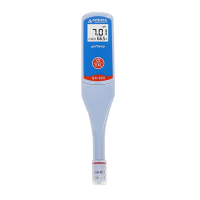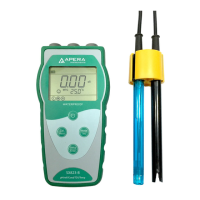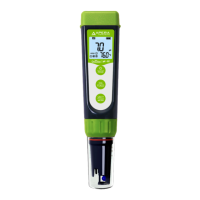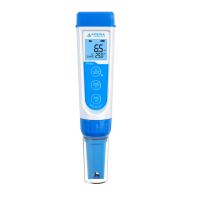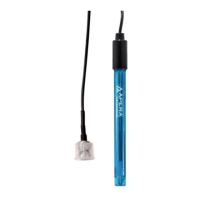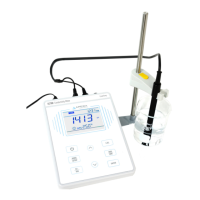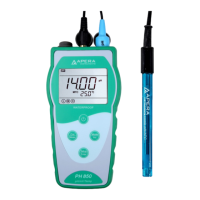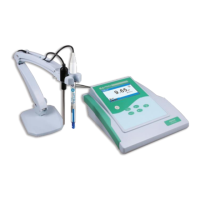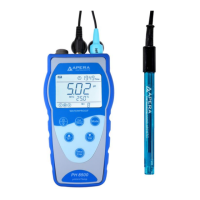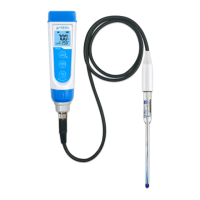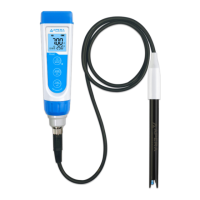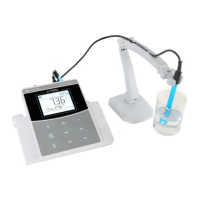4.4 Notes about DO Measurement
a) When calibrating, the environment temperature and water temperature should be
close to each other (≤10˚C). If the difference is large, please dip the electrode into
the sample water for about 10 minutes, then calibrate the electrode according to
Section 4.2.
b) Temperature has a large impact on DO measurement. When the electrode
temperature and water temperature have larger difference, the reading time must be
greater than 3 minutes. Otherwise, there could be some large errors.
c) Salinity and barometric pressure also affect DO measurement. The meter has
automatic salinity compensation and manual barometric pressure compensation. For
details, refer to Section 4.7 and 4.8.
d) When the meter is performing abnormally, please set the mode P7 to be “On” to
restore meter to factory default setting, and then do the calibration again before
measuring.
4.5 DO Electrode Maintenance
4.5.1 Always maintain a moist sponge
Screw off the bottom lid of electrode calibration sleeve (see picture 4-1), inspect whether
the sponge inside is moist. If it is dried out, please add in several drops of distilled water to
the sponge to maintain the satured air inside the calibration sleeve (Do NOT add too much
water so it won’t be dripping).
4.5.2 Remove air bubbles
Inspect the inner solution within the electrode membrane cap. Make sure it doesn’t have air
bubbles. If there are air bubbles, please screw off the membrane cap and add in new inner
solution to remove the bubbles. Then screw the cap back on.
4.5.3 Clean the gold cathode
When the gold cathode is contaminated, use the polishing paper (DO504) to lightly wipe the
gold cathode (along the arc of the gold surface); clean the gold surface with a clean tissue
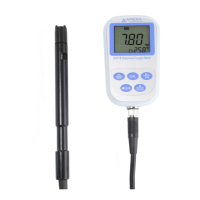
